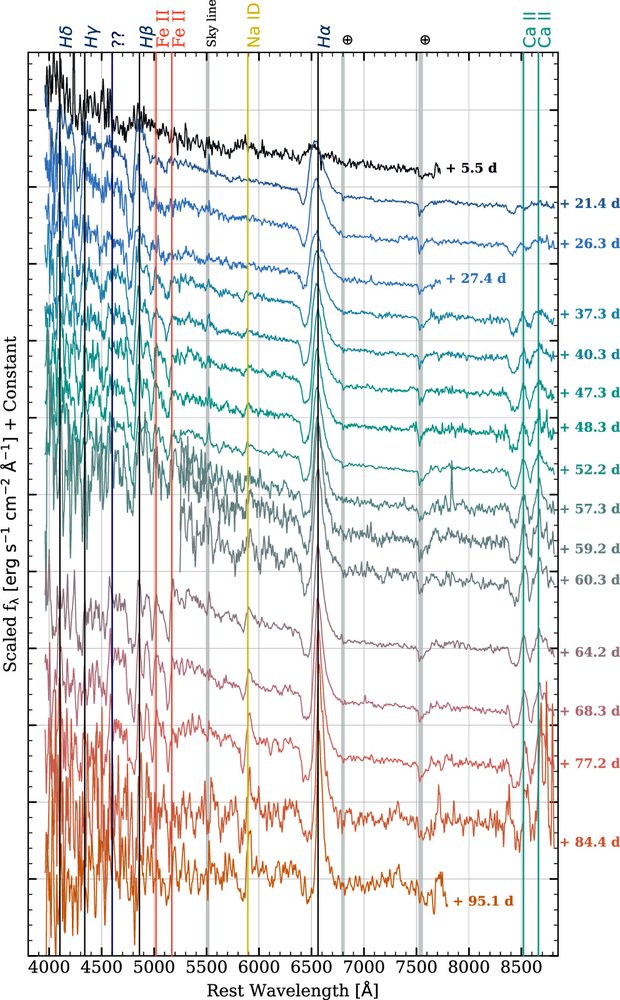RESEARCH HIGHLIGHTS | IIA
TweetSN 2021wvw: a core-collapse supernova at the subluminous, slower, and shorter end of type IIPs
RISHABH SINGH TEJA

We present detailed multiband photometric and spectroscopic observations and analysis of a rare core-collapse supernova, SN 2021wvw, that includes photometric evolution up to 250 days and spectroscopic coverage up to 100 days postexplosion. A unique event that does not fit well within the general trends observed for Type IIP supernovae, SN 2021wvw shows an intermediate luminosity with a short plateau phase of just about 75 days, followed by a very sharp (∼10 days) transition to the tail phase. Even in the velocity space, it lies at a lower velocity compared to a larger Type II sample. The observed peak absolute magnitude is −16.1 mag in r-band, and the nickel mass is well constrained to 0.020 ± 0.006 M⊙. Detailed hydrodynamical modeling using MESA+STELLA suggests a radially compact, low-metallicity, high-mass red supergiant progenitor (MZAMS = 18 M⊙), which exploded with ∼0.2 × 1051 erg s−1 leaving an ejecta mass of Mej ≈ 5 M⊙. Significant late-time fallback during the shock propagation phase is also seen in progenitor+explosion models consistent with the light-curve properties. As the faintest short-plateau supernova characterized to date, this event adds to the growing diversity of transitional events between the canonical ∼100 days plateau Type IIP and stripped-envelope events.